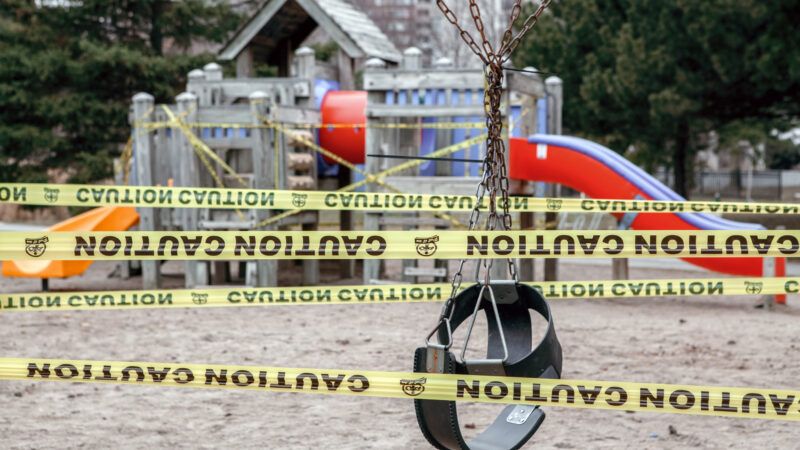NYC Has 98 Closed Playgrounds, Despite Mayor Eric Adams' Pledge
The mayor promised to reopen city playgrounds, but more of them are currently closed than before he took office.

On the campaign trail, Eric Adams—then a candidate for mayor of New York City— promised to prioritize reopening playgrounds in housing projects. A year later, more of them are closed than before, according to a report in The City by Reuven Blau and Candace Pedraza.
"Families need safe outdoor spaces to reclaim a sense of normalcy," Adams had tweeted before becoming mayor. "But in NYCHA [New York City Housing Authority] complexes, delayed repairs and dilapidated playground equipment have made that all but impossible."
Unfortunately, reporter Blau tells Reason, NYCHA "is like this forgotten world." Last year, there were 89 playgrounds closed for repairs. While some reopened, more were taken out of commission. As a result, 98 are now closed—including one that is literally a sink hole. And yet safe, joyful gathering places in housing projects are "where people need them the most."
Blau has followed the failed NYCHA playground story for about six years, ever since hearing about a child injured on one. He filed a Freedom of Information Act request to see how recently that playground's equipment had been inspected.
"It turned out that they were not doing inspections… in any meaningful way," he says.
Nor did the city seem in any big rush to repair and reopen those that were shuttered: A full 47 of them have been closed for "Sandy Recovery and Resiliency work." Some resiliency: Superstorm Sandy was 10 years ago.
Jane Jacobs, an urban activist and author of The Death and Life of Great American Cities, wrote half a century ago that for a city to be vibrant and safe, it needs what she called eyes on the street—people looking out their windows or sitting on their stoops, keeping tabs on the neighborhood. But those eyes need something to watch, she added. "Nobody enjoys sitting on a stoop or looking out a window at an empty street. Almost nobody does such a thing," she wrote.
Almost nobody would want to watch a closed playground, meaning those decommissioned spaces are actually making the housing complexes less safe. And that's on top of many housing projects that currently violate Jacobs' first rule of vibrancy: Do not create a dead zone. By placing projects on large parcels of land that disrupt the city grid, with few commercial spaces to attract pedestrians, the city has already made many housing projects far less vibrant than the rest of New York City's streets.
Boarding up playgrounds is a sure recipe for thwarting childhood fun, health, and socialization. But it's also bad for the city itself.
Show Comments (14)